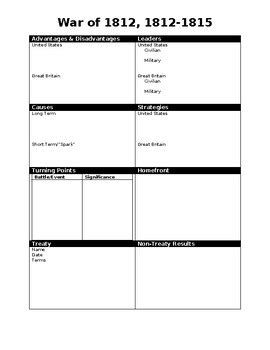The War of 1812 holds significant historical importance as a turning point in American history. While often overshadowed by the American Revolution and the Civil War, the War of 1812 played a pivotal role in shaping the nation’s identity, foreign policy, and economic development. This article explores the causes, key events, and the lasting impact of this tumultuous conflict.

Causes of the War
British Impressment of American Sailors
One of the primary catalysts for the war was the practice of impressment by the Royal Navy. Impressment involved the forced recruitment of American sailors into the British navy, often without regard for their citizenship or legal status. The British argued that these sailors were deserters from their own navy, while the Americans viewed it as an infringement on their sovereignty and a violation of individual rights.
British Blockade of American Ports
In response to the impressment issue, the United States passed the Non-Intercourse Act in 1809. This act prohibited trade with both Britain and France, who were then engaged in the Napoleonic Wars. The British retaliated with the Orders in Council, which imposed a naval blockade on American ports and further restricted American trade.
Expansionist Ambitions in the West
The United States also harbored expansionist ambitions in the West, particularly in the territories of the Northwest and Florida. These territories were controlled by Native American tribes supported by the British and Spanish. The Americans believed that acquiring these lands was necessary for their national security and economic growth.
Major Events of the War
Invasion of Canada (1812-1813)
The war began with an American invasion of Canada in 1812. The Americans initially achieved some successes but were ultimately repulsed by British forces and their Native American allies.
Battle of Tippecanoe (1811)
A key turning point in the war was the Battle of Tippecanoe in 1811, where General William Henry Harrison defeated a confederation of Native American tribes led by Tecumseh. This victory boosted American morale and weakened British influence in the Northwest.
Burning of Washington, D.C. (1814)
In 1814, British forces captured and burned Washington, D.C., including the White House and the Capitol. This event briefly demoralized the Americans but ultimately failed to break their will to resist.
Battle of New Orleans (1815)
After the capture of Washington, D.C., the British planned to invade the Gulf Coast. However, they were decisively defeated at the Battle of New Orleans in January 1815 by Andrew Jackson and his ragtag army of Tennessee militiamen, pirates, and Choctaw warriors. This victory not only secured the American victory but also cemented Jackson’s status as a national hero.
Outcome and Impact
The War of 1812 officially ended with the Treaty of Ghent in December 1814. The treaty restored the pre-war status quo, making no significant territorial changes or concessions. However, the war had several lasting impacts on American society:
Increased National Unity
The war helped create a sense of national unity among Americans, who had previously been divided over issues of foreign policy and economic development. The common struggle against a foreign power fostered a shared sense of purpose and patriotism.
Expansion of American Power
While the treaty did not lead to significant territorial gains, the war weakened British influence in North America and allowed the United States to expand its sphere of influence westward without further British interference.
Economic Development
The war spurred American industrialization as the need for war supplies increased. American factories and shipyards expanded production, leading to increased economic growth and the development of new industries.
Foreign Policy Shift
The war ended the era of the Quasi-War with France and marked a shift in American foreign policy. The United States adopted a more isolationist stance, avoiding foreign entanglements and focusing on internal development for much of the 19th century.
Tables
Table 1: Major Battles of the War of 1812
| Battle | Date | Location | Result |
|---|---|---|---|
| Battle of Tippecanoe | November 7, 1811 | Indiana | American victory |
| Battle of Queenston Heights | October 13, 1812 | Ontario, Canada | British victory |
| Battle of York | April 27, 1813 | Ontario, Canada | American victory |
| Battle of the Thames | October 5, 1813 | Ontario, Canada | American victory |
| Battle of Bladensburg | August 24, 1814 | Maryland | British victory |
| Battle of New Orleans | January 8, 1815 | Louisiana | American victory |
Table 2: American Casualties in the War of 1812
| Cause of Death | Number of Casualties |
|---|---|
| Killed in battle | 2,260 |
| Died of wounds | 4,505 |
| Died of disease | 15,593 |
| Total | 22,358 |
Table 3: British Casualties in the War of 1812
| Cause of Death | Number of Casualties |
|---|---|
| Killed in battle | 1,956 |
| Died of wounds | 3,474 |
| Died of disease | 8,575 |
| Total | 14,005 |
Table 4: Economic Impact of the War of 1812 on the United States
| Sector | Impact |
|---|---|
| Manufacturing | Production increased to meet war demand |
| Shipbuilding | American shipbuilding industry expanded rapidly |
| Agriculture | Export revenues increased due to war shortages |
| Finance | Government debt increased significantly |
Tips and Tricks
- Create a detailed timeline of the war to track key events and battles.
- Use primary sources, such as letters, diaries, and newspapers, to gain a first-hand perspective on the conflict.
- Pay attention to the motivations and actions of key individuals, such as Tecumseh, William Henry Harrison, and Andrew Jackson.
- Analyze the impact of the war on different groups, such as Native Americans, African Americans, and women.
- Consider the long-term consequences of the war, including its impact on American foreign policy, economic development, and national identity.
